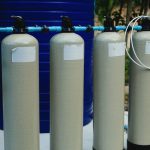The textile industry is taking significant steps to tackle microplastic pollution. From innovative technologies like microfiber-catching laundry bags to stringent regulatory measures, brands are becoming more accountable for their environmental impact. As awareness grows, sustainable practices are gaining traction, but the challenge remains complex. What specific strategies are proving most effective, and how are consumers influencing these changes? Let’s explore the multifaceted approach the industry is adopting in this ongoing battle.
Table of Contents
Key Takeaways
- Development of microfiber-catching laundry bags and filters to capture fibers during washing is being prioritized by the industry.
- Regulatory measures, such as EU legislation on microfiber filtration, are being implemented to reduce textile pollution.
- Brands are innovating sustainable materials, like biodegradable fabrics and recycled polyester, to minimize environmental impact.
- Consumer education initiatives are raising awareness about microplastic pollution and promoting responsible garment care practices.
- Collaboration among stakeholders is enhancing recycling efforts and establishing best practices for sustainability in the textile sector.
Innovative Technologies for Microplastic Reduction
As environmental concerns grow, innovative technologies are emerging to tackle microplastic pollution from textiles. You’ll find that several companies are developing solutions like microfiber-catching laundry bags and filters. These products capture tiny fibers during washing, preventing them from entering waterways.
Additionally, some brands are exploring biodegradable fabrics that break down more easily than traditional materials. You might also notice advancements in textile recycling processes that aim to minimize waste and recover valuable resources.
Innovative brands are developing biodegradable fabrics and enhancing recycling processes to reduce waste and conserve resources.
Another exciting development is the use of advanced coatings that reduce fiber shedding during wear. By embracing these technologies, you can contribute to reducing microplastic pollution, making a positive impact on the environment while enjoying your favorite clothing.
Every choice you make helps support a cleaner, more sustainable future.
Regulatory Measures Addressing Textile Pollution
As we explore regulatory measures addressing textile pollution, it’s crucial to look at the EU legislation that aims to reduce microplastic emissions from textiles.
You should also consider California’s innovative strategy to tackle microplastics, which sets a precedent for other regions.
Understanding these frameworks will help you grasp how different areas are responding to this pressing issue.
EU Legislation Overview
To combat the growing issue of microplastic pollution from textiles, the European Union has implemented a series of regulatory measures aimed at reducing environmental impact.
Here are three key initiatives you should know about:
- Microfiber Filtration Regulations: Manufacturers are required to incorporate microfiber filters in washing machines, helping to capture microplastics before they enter waterways.
- Extended Producer Responsibility (EPR): Brands must take responsibility for the entire lifecycle of their products, including proper disposal, encouraging sustainable practices.
- Eco-Labeling Schemes: The EU promotes eco-labels for textiles, providing consumers with information on the environmental performance of products, guiding your purchasing decisions.
These measures reflect the EU’s commitment to tackling textile pollution and fostering a more sustainable industry.
California Microplastics Strategy
California recognizes the urgent need to address microplastic pollution from textiles, much like the EU’s proactive initiatives. The state’s Microplastics Strategy aims to implement effective regulatory measures that target the textile industry directly.
You’re encouraged to support legislation that mandates manufacturers to adopt sustainable practices, such as using biodegradable materials and improving wastewater treatment processes.
Additionally, California promotes research into innovative technologies that can reduce microplastic shedding during washing. By engaging with local businesses and stakeholders, the state fosters collaboration to develop best practices for textile recycling and waste management.
Ultimately, these efforts will help reduce microplastic emissions, protect marine ecosystems, and improve public health, ensuring a cleaner environment for generations to come.
Advancements in Material Alternatives
As you explore solutions to textile pollution, you’ll find exciting advancements in material alternatives.
Sustainable fiber innovations and the development of biodegradable synthetics are paving the way for a greener future.
Plus, upcycling fabric waste can transform what would be trash into valuable resources, reducing microplastic impact.
Sustainable Fiber Innovations
While the fashion industry grapples with the environmental impact of microplastic pollution, innovations in sustainable fibers are paving the way for a more eco-friendly future.
You might be excited to learn about these advancements that reduce harm without sacrificing style.
Here are three remarkable sustainable fiber innovations:
- Tencel: Made from sustainably sourced wood pulp, Tencel is biodegradable and uses less water in production.
- Recycled Polyester: This fiber repurposes plastic waste, diverting it from landfills and oceans while reducing the need for virgin materials.
- Hemp: Known for its durability and low environmental impact, hemp requires minimal water and pesticides, making it a robust alternative.
Biodegradable Synthetic Development
As the fashion industry seeks alternatives to traditional textiles, advancements in biodegradable synthetic materials are emerging as a promising solution to combat microplastic pollution. These innovations focus on creating fabrics that break down naturally, reducing environmental impact.
| Material Type | Benefits | Current Use |
|---|---|---|
| PLA (Polylactic Acid) | Compostable, derived from plants | Activewear, accessories |
| PHA (Polyhydroxyalkanoates) | Biodegradable, produced by bacteria | Packaging, textiles |
| Tencel (Lyocell) | Sustainable, made from wood pulp | Casual wear, denim |
| Recycled Nylon | Reduces waste, less energy-intensive | Swimwear, outerwear |
| Bio-based Polyester | Reduces reliance on petroleum | Everyday apparel |
Upcycling Fabric Waste Solutions
Upcycling fabric waste offers a creative solution to the growing problem of textile pollution, transforming discarded materials into valuable resources.
You can contribute to this movement by exploring innovative upcycling methods, which not only reduce waste but also promote sustainability.
Here are three effective approaches to evaluate:
- Reimagining Old Clothing: Turn outdated garments into trendy fashion items or accessories, giving them a new lease on life.
- Creating Home Décor: Use fabric scraps to make unique home items, such as cushions, wall hangings, or even quilts, adding character to your space.
- Collaboration with Local Artists: Partner with artisans who can utilize your fabric waste in their projects, fostering community creativity and reducing waste collectively.
Consumer Awareness and Education Initiatives
Understanding the impact of microplastic pollution from textiles is essential for consumers who want to make informed choices. Many organizations and brands are stepping up to educate you about this pressing issue. They’re launching campaigns that highlight how microfibers shed during washing and contribute to ocean pollution.
You might encounter workshops, social media content, and informative labels on clothing that explain how to reduce your personal impact. By participating in these initiatives, you’ll learn practical tips, like using microfiber-catching laundry bags or washing your clothes less frequently.
Knowledge is power, and by staying informed, you can advocate for sustainable practices and support brands committed to reducing microplastic emissions. Your choices can drive change in the textile industry and protect our environment.
Sustainability Strategies in the Textile Industry
Many brands are recognizing the urgency of addressing microplastic pollution and are adopting sustainability strategies to minimize their environmental footprint.
Brands are increasingly prioritizing sustainability to combat microplastic pollution and reduce their environmental impact.
These strategies often include:
- Material Innovation: Brands are investing in alternative fibers, like organic cotton and recycled polyester, which are less prone to shedding microplastics.
- Production Processes: Implementing cleaner production techniques helps reduce waste and energy consumption. This includes using water-efficient dyeing methods that limit harmful runoff.
- Consumer Engagement: Educating consumers on proper garment care can greatly reduce microplastic release.
Encouraging practices like cold washing and using microfiber filters can make a difference.
Collaborative Efforts Among Industry Stakeholders
As the textile industry grapples with the challenge of microplastic pollution, collaboration among stakeholders has become essential.
You’ll find brands, manufacturers, and NGOs joining forces to tackle this pressing issue. By sharing best practices and innovative solutions, they aim to reduce microplastic release during production and washing processes.
Initiatives like the Microfibre Consortium foster partnerships that facilitate the development of effective filtration technologies and sustainable materials.
You can also see companies committing to transparency, ensuring consumers are aware of their environmental impact.
As you explore these collaborative efforts, you’ll recognize that collective action is vital for creating meaningful change and driving the industry toward a more sustainable future.
Together, stakeholders can greatly mitigate the effects of microplastic pollution.
The Role of Research and Development
While tackling microplastic pollution, research and development (R&D) play an essential role in finding innovative solutions.
By investing in R&D, you can address this pressing issue through various strategies, including:
Investing in R&D opens pathways to innovative solutions for tackling microplastic pollution effectively.
- Material Innovation: Developing biodegradable or less shedding fibers can considerably reduce microplastic release during washing.
- Advanced Filtration Systems: Creating new technologies for washing machines and wastewater treatment can capture microfibers before they enter water systems.
- Consumer Awareness Programs: Researching effective ways to educate consumers on responsible textile care can minimize shedding and encourage sustainable practices.
Future Directions for Sustainable Textiles
To create a more sustainable future for textiles, the industry must embrace innovative practices that prioritize environmental responsibility.
You can support this shift by choosing brands that utilize eco-friendly materials, like organic cotton or recycled fibers. Additionally, advocating for circular fashion models can help reduce waste and extend the life of garments.
Encouraging brands to implement take-back programs allows you to return used textiles, promoting reuse and recycling. Staying informed about advancements in biodegradable textiles and waterless dyeing techniques can also drive change.
Frequently Asked Questions
How Can Consumers Reduce Microplastic Pollution From Their Laundry?
You can reduce microplastic pollution by washing clothes less frequently, using cold water, choosing microplastic filters for your washing machine, and opting for natural fibers over synthetic ones. Every small action contributes to a cleaner environment.
What Are the Environmental Impacts of Microplastics on Marine Life?
Microplastics are like invisible poison in the ocean’s bloodstream, harming marine life. They disrupt ecosystems, choke marine animals, and accumulate in food chains, ultimately threatening human health and the delicate balance of our planet’s waters.
Are There Certifications for Textiles That Minimize Microplastic Shedding?
Yes, you can find certifications like Global Recycled Standard and OEKO-TEX that focus on minimizing microplastic shedding. These labels indicate that the textiles meet specific environmental and safety criteria, helping you make informed choices.
How Do Microplastics Affect Human Health?
Microplastics can enter your body through ingestion or inhalation, potentially causing inflammation, hormonal disruptions, and other health issues. Staying informed about your environment helps you minimize exposure and protect your health from these tiny pollutants.
What Is the Economic Impact of Transitioning to Sustainable Textiles?
Imagine a brand switching to organic cotton; you’ll see initial costs rise, but long-term savings from reduced waste and health benefits can outweigh those expenses. Shifting to sustainable textiles often leads to economic advantages over time.
- How to Soften Percale Sheets: Tips and Tricks From Reddit Users - July 14, 2025
- Is 200 Thread Count Cotton Percale Good? A Quality Analysis - July 14, 2025
- How to Soften Percale Sheets: 5 Methods That Actually Work - July 14, 2025






